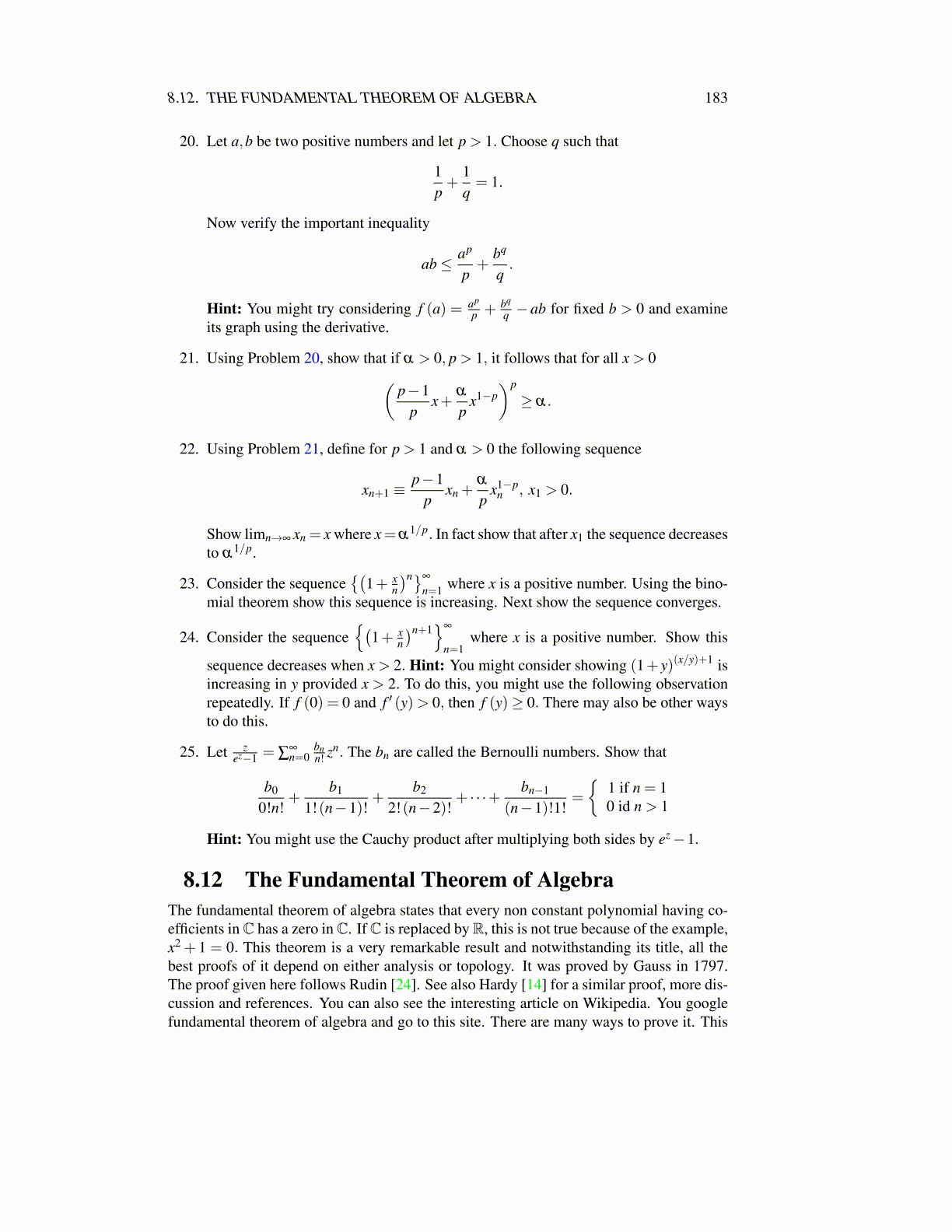
8.13. SOME OTHER THEOREMS 183
Proof: Suppose the nonconstant polynomial
p(z) = a0 +a1z+ · · ·+anzn,an ̸= 0,
has no zero in C. By the triangle inequality,
|p(z)| ≥ |an| |z|n−∣∣a0 +a1z+ · · ·+an−1zn−1∣∣
≥ |an| |z|n−(|a0|+ |a1| |z|+ · · ·+ |an−1| |z|n−1
)Now the term |an| |z|n dominates all the other terms which have |z| raised to a lower powerand so lim|z|→∞ |p(z)|= ∞. Now let
0≤ λ ≡ inf{|p(z)| : z ∈ C}
Then since lim|z|→∞ |p(z)| = ∞, it follows that there exists r > 0 such that if |z| > r, then|p(z)| ≥ 1+λ . It follows that
λ = inf{|p(z)| : |z| ≤ r}
Since K ≡ {z : |z| ≤ r} is sequentially compact, it follows that, letting {zk} ⊆ K with|p(zk)| ≤ λ +1/k, there is a subsequence still denoted as {zk} such that limk→∞ zk = z0 ∈K.Then |p(z0)|= λ and so λ > 0. Thus,
|p(z0)|= minz∈K|p(z)|= min
z∈C|p(z)|> 0
Then let q(z) = p(z+z0)p(z0)
. This is also a polynomial which has no zeros and the minimum
of |q(z)| is 1 and occurs at z = 0. Since q(0) = 1, it follows q(z) = 1+akzk + r (z) wherer (z) consists of higher order terms. Here ak is the first coefficient of q(z) which is nonzero.Choose a sequence, zn→ 0, such that akzk
n < 0. For example, let −akzkn = (1/n). Then for
r (z) = amzm +am+1zm+1 + ...+anzn for m > k,
|q(zn)| =∣∣∣1+akzk + r (z)
∣∣∣≤ 1−1/n+ |r (zn)|
≤ 1− 1n+
1n
n
∑j=m
∣∣a j∣∣ |ak|1/k
(1n
)( j−k)/k
< 1
for all n large enough because the sum is smaller than 1 for n large enough. This contradicts|q(z)| ≥ 1.
8.13 Some Other TheoremsFirst recall Theorem 5.5.6 on Page 96. For convenience, the version of this theorem whichis of interest here is listed below.
Theorem 8.13.1 Suppose ∑∞i=0 ai and ∑
∞j=0 b j both converge absolutely. Then(
∞
∑i=0
ai
)(∞
∑j=0
b j
)=
∞
∑n=0
cn
where cn = ∑nk=0 akbn−k. Furthermore, ∑
∞n=0 cn converges absolutely.